A Collector’s Guide to Sabres and Their History
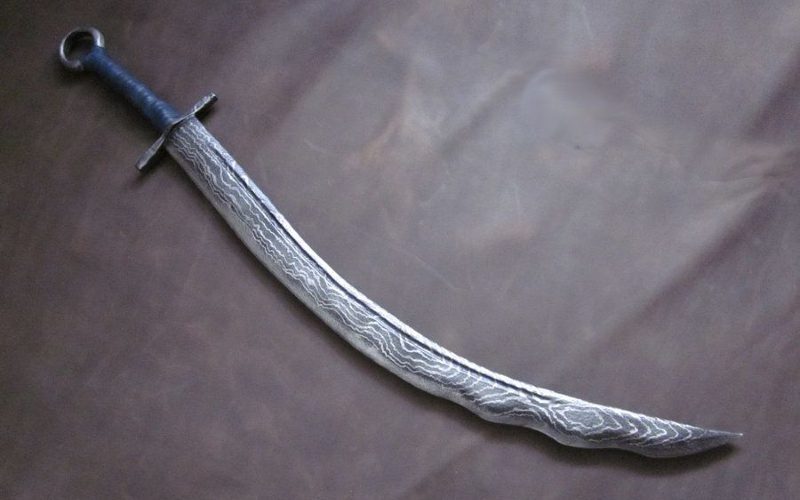
What’s in this article?
The saber, a long single-edged sword with a curved blade, was traditionally regarded as the true weapon of the cavalry. It originated from Central Asia and then spread into Europe. Eventually, it became a significant cavalry weapon during the early modern and Napoleonic periods.
Let’s explore the characteristics of sabres, the popular types from different cultures, and their history.
General Characteristics of a Sabre
The sabre is characterized by its curved single-edged blade, though its configuration varies in different cultures and periods. Here are the typical characteristics of a sabre:
Type of Metal
Different cultures and centers of sword production provided various metals of sorts. While the Japanese swordsmiths forged sword blades from tamahagane, most Islamic swords were made from wootz steel and had damascus steel blades.
Many European sabres of the 17th century were equipped with Middle Eastern blades. Solingen in Germany produced the best quality steel which persisted well into the 18th century. Many cutlers made hilts and mounted them on Solingen blades or ones from Toledo or Venice.
Blade Appearance
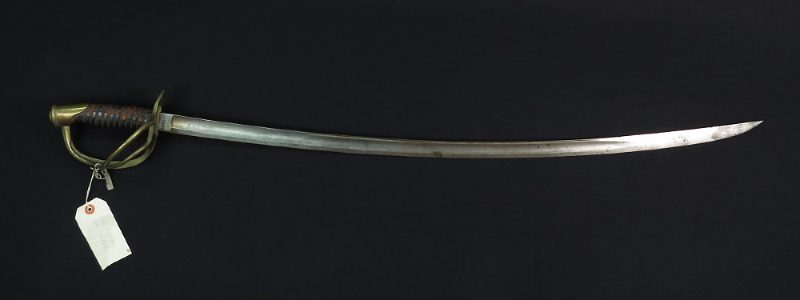
Generally, sabres had long cutting edges that were perfect for slashing attacks. Although varying in shape, sabre blades were generally single-edged and curved where some types have a slight curvature while others have a radical one. Many European sabres also featured Eastern-influenced curved blades.
Considered among the best cutting swords of its time, the Model 1796 sabre of the British cavalry had a blade shape that had an Eastern influence, similar to the Indian talwar or the Hungarian hussar sabre. Unlike other curved blades of the period, its blade widened near the tip.
On the other hand, French sabers had narrower blades than their British counterparts as the French light cavalry preferred to thrust with the tip of their blades and deliver slashing cuts. From the 1840s onward, U.S. cavalry sabers were almost exclusively based on French designs.
Size and Weight
Since cavalry troops needed greater reach for slashing attacks, sabres were highly suitable as they generally had long blades. However, they widely varied in length depending on the regulation. Although some types of sabers were shorter, saber blade lengths usually ranged from around 60 to 80 centimeters (23 to 31 inches) long. Like most swords used on the battlefield, sabers were maneuverable weapons weighing around 2 to 4 pounds.
Sword Mounting
Sabers have distinctive hilt designs and mountings that set them apart from other swords. Generally, each feature a one- or two-handed grip and a sword guard to protect the hands. Sword guard designs varied, from rounded to shell types, knuckle bows, and basket hilts.
Most Eastern sabers usually had elaborate mountings, with distinctive pommels and hilts. Eastern sabers usually had wooden scabbards, while European and American types had steel scabbards with wooden liners. The latter often had suspension rings, which allowed the weapon to be hung from the waist.
Sabres vs. Backswords

The term sabre comes from French and probably originated from Polish and Hungarian szabla, which describes a curved single-edged sword. It served as a slashing weapon designed for cavalry use. On the other hand, the term backsword refers to a type of sword with a single-edged blade, which can be straight or curved. Technically, the saber is part of the backsword family.
However, the backsword often implies a straight blade and a well-developed closed guard, usually a basket hilt like the Scottish basket-hilted sword, mortuary swords, and schiavona. The backsword was easier to make than a double-edged sword, so it also became the preferred sidearm of the infantry. In the late 16th and early 17th centuries, it functioned as a secondary weapon for European cavalrymen.
A Brief History of Sabres
The sabre originated from Central Asia and its use then spread into Europe. In fact, the Turko-Mongol sabre had a significant impact on the development of curved blades throughout the world. By the 20th century, military sabres gained ceremonial roles while the fencing sabre became one of the sport’s standard weapons.
The Early Sabres of Turkic and Mongol Tribes

One of the most influential sabres came from the Turkic and Mongol tribes of the Mongolian steppes. The Turko-Mongol sabre had a long, slender, and slightly curved blade. It also featured a pear-shaped pommel, angled hilt, and short quillons—or arms of the crossguard.
Many historians regard the Turko-Mongol sabre as the parent sword of several swords including the Turkish kilij, Arab saif, Persian shamshir, Indian talwar, and the European sabre.
In the early 13th century, the Mongol cavalry used their sabres for slashing from horseback and conquered much of China, Central Asia, the Middle East, India, and Eastern Europe. As a result, the Turko-Mongol sabre influenced the development of curved blades throughout these regions.
In the Napoleonic Wars (1801 – 1815)
In the late 18th century, the light cavalry swords of the French Revolution and the Napoleonic Wars evolved into a sabre with a curved blade, designed as a cutting and slicing weapon. The light cavalry initially consisted of hussars and chasseurs. However, the heavy cavalry, the cuirassiers, utilized long straight thrusting swords and pistols.
Unlike their British counterparts, French foot soldiers carried a sword, most often the briquet. The Napoleonic infantry sabre was initially worn by light infantry and grenadiers, but by 1807, it became limited to carabineers, grenadiers, drummers, and other officers. It was generally carried on a baldric over the right shoulder and sometimes decorated with dragonne, a tasseled wrist strap.
In the American Civil War (1861 – 1865)
The American Civil War, fought between the Confederacy and the Union forces, was primarily a foot soldier’s war as the U.S. Army initially neglected the use of cavalry in warfare. Although sabers and other traditional cavalry weapons were still issued, the mounted troops heavily depended on firearms. The classic military swords used were the 1840 Heavy Cavalry Saber and the 1860 Light Cavalry Saber.
During the time, the sabers were rarely more than decorative. The Confederate soldiers often did not carry sabers, but equipped themselves with pistols, rifled muskets, and shotguns. On the other hand, the Union cavalry relied on carbines and rifles. At the Battle of Winchester, the Union troops conducted saber charges, though they did the most damage with their carbines.
The Sabre in Dueling
Dueling served as a way of settling a conflict or a matter of honor through individual combat. It has ancient origins, from the Vikings to the medieval knights, and this practice thrived until the late 19th century. Rapiers and smallswords were typical dueling weapons, but in the French Army, the soldiers used sabres or distance weapons like pistols.
In Sabre Fencing

In Europe, fencing developed as a form of training for duels and warfare. By the 15th century, it evolved into a sport and reached popularity by the 16th century when it became traditional for civilians to carry swords.
Early fencing utilized rapiers and smallswords, but by the 18th century, fencers used fencing swords such as the foil and epee with flexible blades and blunt tips. By the 19th century in Italy, the sabre developed as a light fencing weapon.
Most Popular Types of Sabres
Also spelled saber in American English, the sabre is a curved single-edged sword mainly used by the cavalry. The saber had been popular in the East for centuries and emerged in western and southern Europe in the late 15th century. By the 19th century, many U.S. swords were based on French designs, widely used during the American Civil War.
1. Dao (China)
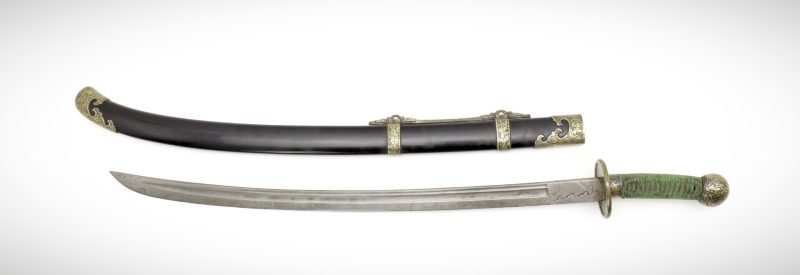
The term dao refers to several single-edged Chinese blades. The Mongol Invasion of China and the founding of the Yuan dynasty influenced the Chinese swords. From the 14th to the 20th centuries, the Chinese cavalry used the liuyedao or willow leaf saber as a slashing weapon.
The liuyedao had a long, moderate curve in narrow and wide varieties. Some also featured a sharp back-edge near the tip for thrusting. These curved blades often equipped the waist swords called yaodao or peidao.
2. Katana (Japan)
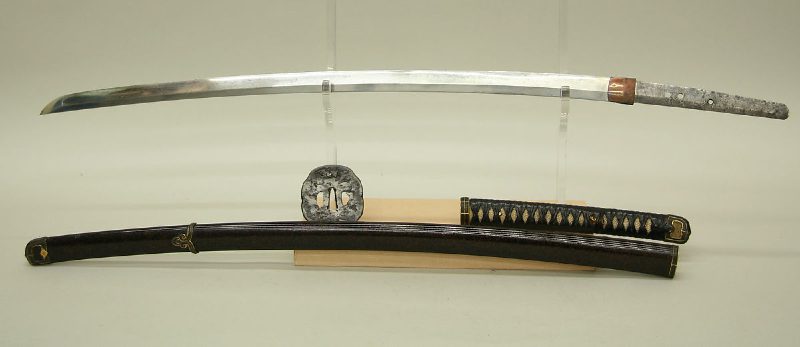
The katana was the most famous sword of the samurai, the military elite of Japan from the 12th century until the Meiji Restoration in 1868. Slightly curved and single-edged, the katana was the long sword of the samurai.
Unlike the earlier curved tachi, the warriors wore the katana with the edge facing up, which allowed drawing and slashing with one stroke. The Mongol Invasions of Japan contributed to the development of katana and the design and manufacture of samurai swords.
3. Kilij (Turkey)
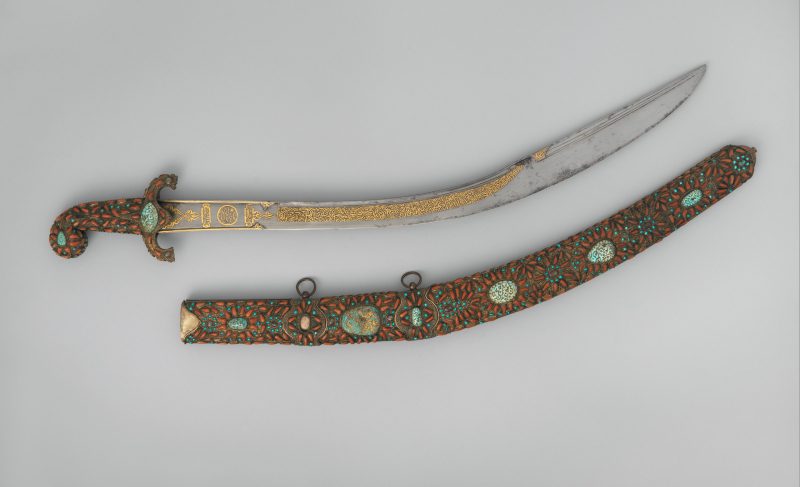
The Turks, who migrated from Central Asia to Anatolia—now in Turkey, founded the Ottoman Empire, and their sabers reflected their origins. Derived from the Turko-Mongolian sabre, the kilij was the typical Ottoman sword during the 15th century.
The kilij had a distinctive flaring tip called a yelman or false edge, which enhanced its slashing power, and a deep curve cut away along its back edge. Several military forces across the Islamic world, from North Africa to India and Persia, used similar swords.
The Europeans first encountered these sabres during their wars with the Ottomans and called them scimitars—a term that collectively refers to curved Asian swords. Western troops had encountered these Turkish sabers in combat even into the 20th century.
4. Saif (Arabia)
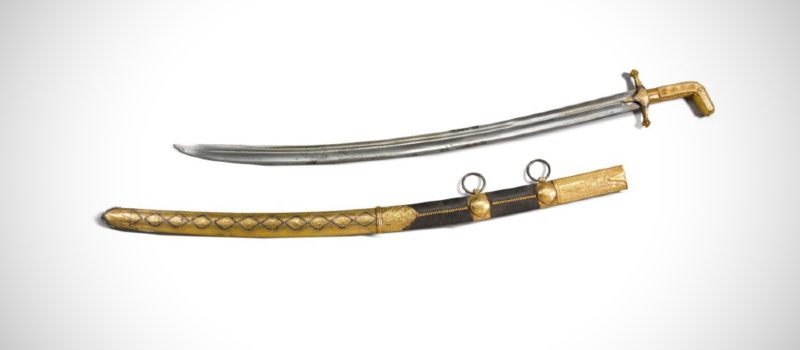
Sometimes spelled sayf, the term saif is an Arabic word for sword and refers to the broad-bladed Arab sabre with a hooked pommel. Unlike most Islamic swords, it had a shallow curve and did not taper to a point. Historical examples come from countries where Arabs lived, including North Africa, which was part of the Ottoman Empire during the 16th century.
5. Shamshir (Persia)
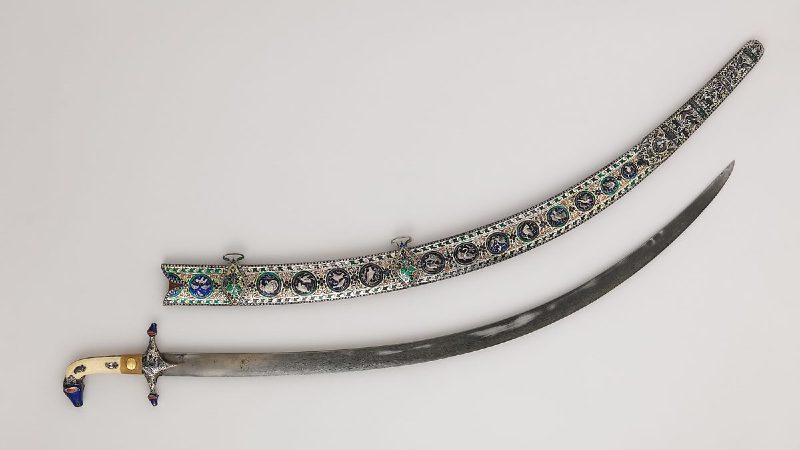
In the 16th century, the shamshir spread from Persia and served as a slashing weapon for fighting on foot or horseback. The Persian sabre is characterized by its deep curved blade that tapers to a point and its L-shaped pommel. Its typical examples can also be found in India, Turkey, and other parts of the Islamic world.
[relatedview related_url=”https://adworkdesign.com/swords/persian-swords/”]
6. Talwar (India)
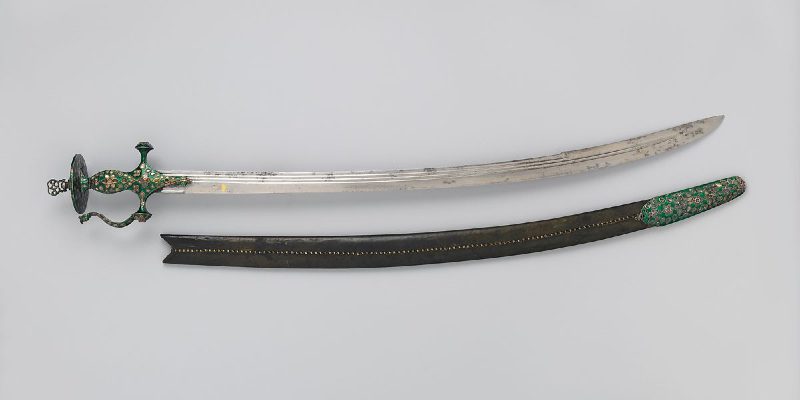
Also spelled tulwar, the talwar was the typical sword of the Mughal Empire, a Muslim dynasty of Turkic-Mongol origin, when most of the Indian subcontinent was ruled by Mongol conqueror Bābur. Most recognized for its disc pommel, the Indian sabre often featured a raised or sharp back-edge. Many Hindu princes adopted the sabre though the straight-bladed sword khanda remained in use.
7. Shashka (Russia)
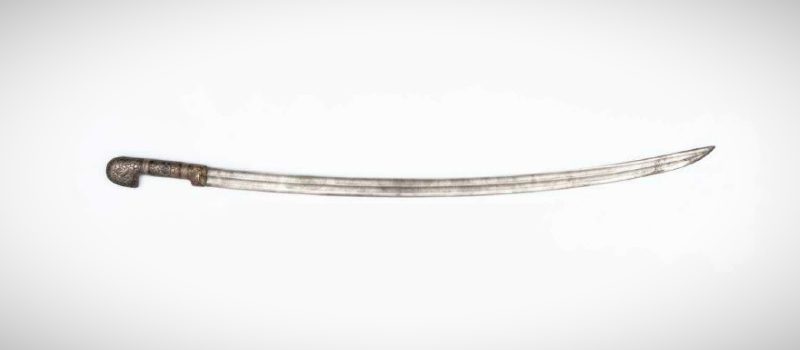
The shashka was the traditional sword of the Cossacks, people of Slavic or Eurasian descent who established themselves in Ukraine and southern Russia around the 14th century. The Cossack warriors fought in various state armies and wielded the shaska from horseback, though they used the shorter sword kindjal when fighting on foot.
The shashka had a saber-like blade with a sharp tip and served as a slashing and thrusting weapon. It had a distinctive curved pommel but without a hand guard, which allowed the warriors to use the full length of the blade in cutting. The Cossacks were recognized for their saber charges on the battlefield, which were recorded as late as World War I.
8. Hanger (Europe)
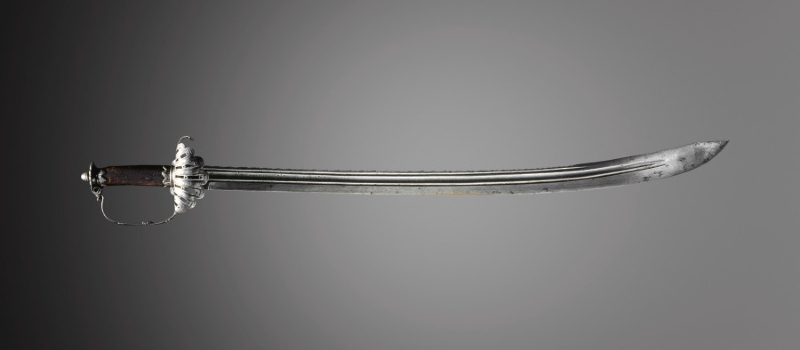
Originally designed for hunting, the hanger became a standard military sword in several armies by the 18th century. The hanger usually refers to a short sword, often with a curved blade, though it also comes in straight varieties. It is so-called because of the way it was hung from the belt. Hunting in the Renaissance served as training for war, and the tradition produced fine hunting swords.
In the 16th century, the hunting swords of the European aristocrats were elaborately decorated. British hangers often featured two shell guards, one that curved towards the blade and the other towards the pommel, and a knuckle guard. However, the hangers traditionally carried by the infantry as a sidearm were a crude variant of a hunting sword.
Hangers with slightly curved blades were best suited for slashing and later became more practical in dense forests than typical longer swords. By the 19th century, the sword bayonet with a long blade replaced the hanger sword of ordinary foot soldiers.
9. European Military Sabres
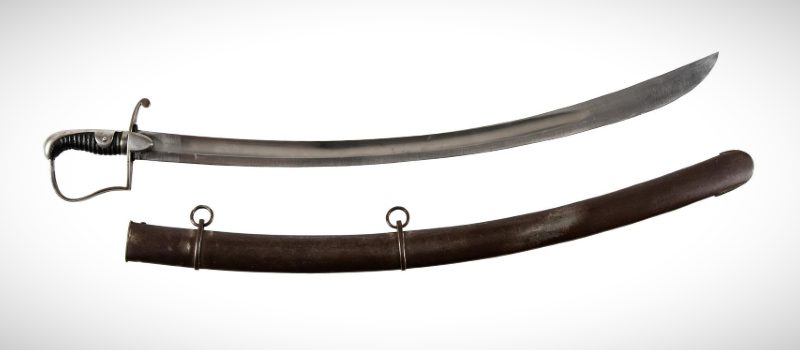
European sabres were widely used during the French Revolution and Napoleonic Wars. The British Army acknowledged that the sword blades of the Turks, Hungarians, and Moors were superior to the heavy swords. The most popular sabre is the 1796 Light Cavalry Sabre designed by British commander John Le Marchant.
10. American Sabers

During the American Civil War, military-issued sabers were based on French design featuring a curved, single-edged blade. These were the 1840 Heavy Cavalry Saber (the Old Wristbreaker) and the 1860 Light Cavalry Saber. However, the popularity of cannons and muskets made them impractical in open battles.
Apart from the cavalry, infantry officers were also equipped with curved-bladed swords. However, these foot officers’ swords were rarely used in actual combat and mostly served as a symbol of rank. The US Navy also used a cutlass, a short and broad sabre for defending their vessels against enemies on their ships.
11. Fencing Sabre
The modern fencing sabre has a lighter and more flexible blade than a real sword. It also features a V-shaped blade and a crescent-shaped guard. In sabre fencing, fencers use the edges and tip of the blade to score points, hitting the target areas on their opponent’s body. Today, sabre events are included in several international fencing competitions and remain part of the Olympic games.
Conclusion
From the samurai to the Ottoman Turks, the Cossacks, and Napoleon’s army, the sabre was among the most fearsome weapons of the world’s greatest warriors. The most popular sabres are the Japanese katana, Persian shamshir, Indian talwar, and the military sabres of the Napoleonic and American Civil Wars. Even today, sabers remain relevant among HEMA practitioners, Olympic fencers, and sword collectors.



